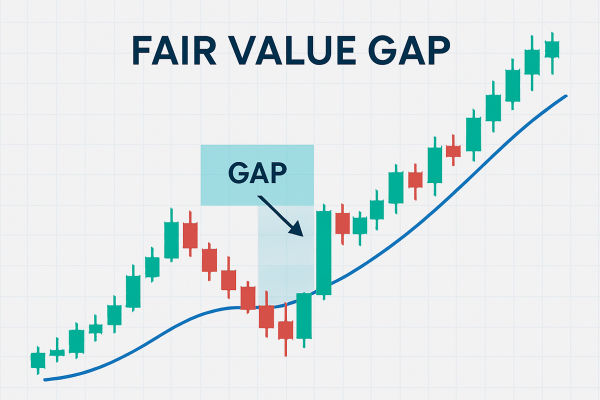Greece, one of the ancient civilizations of the past, is no longer in the limelight. Today, Greece is heavily indebted and has no choice but to sell its islands to pay off its debts. One of the reasons for this situation is the high unemployment rate. Unemployment is a key factor in the financial markets and is known as the jewel in the crown of economic indicators.
 What is the unemployment rate?
What is the unemployment rate?
The unemployment rate (UR) is an economic indicator that reflects how much of the labor force is unemployed, i.e., those who are looking for work but cannot find it, usually expressed as a percentage, during a specific period of time. In 1962. the American economist Ocken put forward Ocken's Law, which reveals the relationship between it and economic growth.
A lower UR indicates that the economy is in good shape, which is conducive to Currency Appreciation. Your growth indicates a slowdown in the economy, and the country will stimulate the economy to provide more jobs through policies. The vast majority of developed countries in the world use the survey method of statistics (UR) because of its scientific methodology, detailed data, and therefore more objective and comprehensive nature. In the United States, there are Census Bureau statistics (UR), which the Department of Labor announces on the first Friday of each month.
Unemployment can be divided into two categories: natural unemployment and unnatural unemployment. One of the forms of unnatural unemployment is called cyclical unemployment. This is the unemployment of insufficient aggregate demand, a decline in the level of spending and output of the economy as a whole, which usually occurs during a recession. The economy is cyclical, and when there is a recession, people don't have any money, and there is less demand for products. Suppliers then produce less, so the market doesn't need as many employees, and as a result, the UR goes up.
There are three types of natural unemployment. One type is frictional unemployment, which refers to unemployment caused by the time it takes for workers to find and secure employment. In other words, it takes time for an employee to find the job that best suits his or her needs and skills. Let's say this is the case when a fresh graduate has to look for a job, and it has nothing to do with the economic situation.
The second is structural unemployment. When a certain field changes and declines, employees who only have specialized knowledge or skills in that field will lose their jobs. For example, if the demand for agriculture is declining, it is difficult to find a job in other fields if you only have skills in this area because you do not have those skills.
The third type is seasonal unemployment, which is caused by seasonal variations. There are some seasons when work is needed and some seasons when work is not needed, and this causes unemployment. For example, fishermen cannot catch fish in the winter or in the rainy season.
So when full employment is reached, it does not mean that no one in a society is unemployed at all. It means that when unemployment is only natural unemployment, that is, when unemployment is equal to natural unemployment, then the country or society can be said to have reached full employment.
Of course, unemployment means that there is no income, and the natural livelihood will be affected. Unemployed people need to rely on previous savings or loans from family and friends, which will definitely affect their personal lives. Because you do not have a stable income, you will then lose your skills. Some job skills must be practiced all the time in order to maintain them. When you are unemployed for a period of time, those skills may fade away, and if it goes on for a long time, those skills may deteriorate.
There are also social and political problems. A recession and high UR can make people unhappy with the government of the day, which can lead to a lot of criticism of the government and even protest marches. Unemployment can also cause social problems such as stealing or looting.
Unemployment will reduce government development programs; unemployment means less revenue for the government. Because unemployed people don't pay taxes, the government's tax revenue will decrease. Lower income will reduce development activities and also slow down development progress.
UR and the country's economy are intertwined. Unemployment causes companies to produce less, and naturally, profits are reduced. Low profits do not attract investment from investors, which also affects the overall economy.
What is the unemployment rate?
| Concepts |
Definition |
| Unemployment rate |
the percentage of job seekers in the labor force who haven't found work yet. |
| Labor force population |
includes all available workers who are employed and actively job-seeking. |
| Employment rate |
the percentage of people with jobs in the labor force. |
Calculation formula
It is used to measure the ratio of the number of unemployed people in the labor market to the total number of people in the labor force in a particular region, country, or area.
The formula is as follows: Unemployment rate = (number of unemployed persons/total labor force) x 100 percent
Where the number of unemployed is the number of people who are looking for a job but cannot find one, and the total labor force includes the sum of all employed people (including full-time, part-time, and temporary workers) and unemployed people who are looking for a job.
How much is the normal range?
It is a dynamic indicator that changes with time and circumstances. And it varies according to country, state, region, economic cycle, and other factors; generally speaking, developed countries try to keep it between 4% and 8%.
When unemployment is all natural, it is the level of UR that is in normal economic operating conditions. This level is affected by the inflation rate, the structure of the labor market, and other factors. Under natural unemployment, unemployment is mainly caused by normal flows and structural changes in the labor market, rather than by abnormal factors such as economic downturns.
When UR is below natural unemployment, it usually means that the economy is in a strong growth phase, the labor market is tight, and firms need more workers to meet demand. This can lead to rising salaries and more job opportunities, which is usually a positive sign for individuals and families.
When the UR is higher than the natural unemployment rate, it may indicate an economic downturn or a labor market problem. In this case, more people are unable to find jobs, which may lead to a poor economy, lower household incomes, and increased social welfare expenditures. Governments and policymakers usually take measures to reduce UR, e.g., by stimulating the economy and providing training and education.
What is the normal range for the unemployment rate
| Range |
Description |
| Less than 2% |
Very Low, Economic Boom |
| 2% to 4 |
Low, healthy economy |
| 4% to 6 |
Normal, stable economy |
| 6% to 8% |
High, slight economic problems |
| 8% to 10% |
High economic problems are likely. |
| Above 10 percent |
Very high, serious economic challenges |
Relationship with the inflation rate
There is usually a trade-off between them, known as the "Phillips Curve". This economic theory describes the inverse relationship between the two, i.e., in the short term, when the UR decreases, the inflation rate usually increases, and vice versa. Below is the relationship between the two:
INVERSE RELATIONSHIP: According to the Phillips curve, there is a negative correlation between the two. When the UR is low, it indicates a tight labor market; labor supply and demand are skewed in favor of labor, and wages rise. This may cause firms to increase the price of their products, which may trigger inflation.
Long-run trade-off: While this inverse relationship exists between the two in the short run, it may no longer hold in the long run. In the long term, the inflation rate is primarily influenced by factors such as monetary policy, money supply, and productivity, with a relatively minor relationship to the unemployment rate (UR).
Policy implications: governments and central banks can adjust the balance between the two through monetary and fiscal policies. For example, by reducing interest rates and increasing government spending, the government can stimulate growth and lower UR, but this may lead to higher inflation. Conversely, tightening monetary policy and cutting government spending may dampen inflation but may lead to a rise in UR.
Expectation effect: The expectations of individuals and firms can also influence the relationship. If people expect inflation to rise, they may demand higher salaries, thus increasing inflation. Conversely, if people expect inflation to fall, they may be more willing to accept lower salaries, which may dampen inflation.
Reasons for not publishing
UR data is usually published on a regular basis to help governments, economists, businesses, and investors understand what is happening in the labor market in order to formulate policies and make investment decisions. Reasons why it may not be published or be delayed can include:
In some cases, government agencies may face data collection and processing problems that result in the delayed release of unemployment data. This may be due to technical failures, data collection difficulties, natural disasters, or other unpredictable circumstances.
The government may sometimes decide to withhold or delay the release of unemployment data for a while, as these data may have a significant impact on government policies and the market. The government may wait until a certain point in time or when the situation is more stable before releasing the data to avoid triggering unnecessary market volatility. Or in some countries or regions, the government may consider that the release of unemployment data may pose a threat to national security and may therefore withhold or restrict the flow of relevant information. Sometimes political factors may lead to the manipulation or non-publication of unemployment data. Governments or political interest groups may try to manipulate the data for political gain or prevent their publication to hide the true picture.
It is important to emphasize that open and transparent UR data are essential for a healthy economy and a fair labor market. Governments and statistical agencies typically strive to ensure the accuracy and reliability of data and publicly release data to maintain transparency. The announcement by the Chinese Bureau of Statistics in August 2023 that it would not release the youth unemployment rate had a huge impact and was the subject of much debate both at home and abroad, with the statement that it was "more ugly not to publish than to cover up".
Disclaimer: This material is for general information purposes only and is not intended as (and should not be considered to be) financial, investment, or other advice on which reliance should be placed. No opinion given in the material constitutes a recommendation by EBC or the author that any particular investment, security, transaction, or investment strategy is suitable for any specific person.


 What is the unemployment rate?
What is the unemployment rate?



